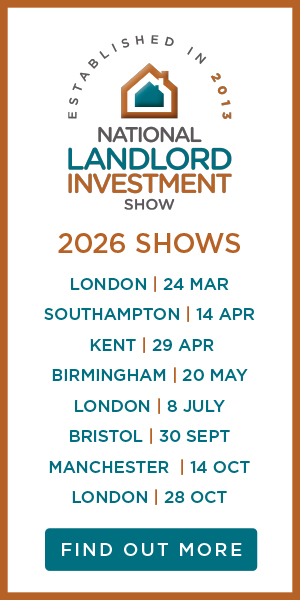As a property investor, you’ll have your own strategy when it comes to operating in the UK real estate sector. This may partly be influenced by the ambitions and goals for your business, or even your style and preferences as an individual.
For instance, if you are a part-time investor with half a dozen properties then your strategy could be very different to that of a full-time investor with a large portfolio of both residential and commercial property assets. Having said this though, at the core of property investing, there are two main strategies:
- Buy a property and rent in order to let it out
- Buy a property in order to sell it on for profit
Beyond this, there are a number of different strategies that you might use depending on the property type you wish to invest in and your investment goals, as well as other things you will need to consider, like your financial capacity and your willingness to shoulder any financial risk, for example. Here’s a quick crash course on the major landlord investment strategies as determined by different property investment types.
Buy-to-let
With a buy-to-let property, you can make money from the monthly rental income from the house, the growth in capital value of the property over time or a combination of both. Generally, you will benefit from regular income as well as the potential for further gains over time.
This is perhaps the simplest and most common form of investing in property. If you’re able to buy the property in a good location and secure reliable tenants on a regular basis, then you’ll be able to enjoy predictable returns and added value as the price increases over time.
Meanwhile, a potential drawback of this method is that returns may not be as high as other investment methods. Also, your capital will be tied up in a single asset and depending on how the market performs, you could end up being stuck with a poorly performing asset if you can’t find tenants to rent out your property. Alternatively, you might even be forced to lower your rent to a point that it doesn’t cover your mortgage repayment costs.
HMOs
An HMO is a property that a number of different individuals rent out. Essentially, it is a house share and often, these individuals are unrelated. In general, if you rent out a property by the room, you’ll be able to generate more revenue overall than if you were to rent out the property as a whole to one individual.
A common strategy is to turn the living room of an HMO into another bedroom to maximise how much you can make from the rent each month. However, there are also higher costs associated with HMOs and some added responsibilities. For instance, HMOs tend to be let furnished with bills included, plus there’s likely to be more wear and tear on the property requiring you to pay for regular maintenance and repair work.
Also, depending on whether you hire a letting agent to handle the day-to-day management of the HMO property, you may find this type of investment strategy more time-consuming. But if you get this method right, you could enjoy a higher yield than single lets as well as a more diversified income stream with the potential for your property to keep generating revenue even if one of your tenants decides to leave.
Student accommodation
The student market in the UK continues to be strong. While this type of investment is not so different to HMOs, there are a few added considerations to make if you’re thinking of expanding your portfolio into student territory.
Firstly, the management of student property is more predictable as they are based on term times. You’ll generally know when tenants need to move in and when they’ll be moving out. Also, the tenants will usually be on one joint contract. This means that if one student leaves, the others will still continue paying for their share of the rent.
Holiday lets
A holiday let is a property that’s rented out only for a short period of time to holidaymakers. Serviced apartments are a similar property investment model, with the focus instead on professional business people. Depending on the location of your property, you can make a huge amount of profit with this type of property investment.
With more and more people preferring to live in a furnished home or apartment rather than a hotel, the demand for holiday lets is only increasing. Investors using this strategy can benefit from better tax policies than single lets as well as a shorter occupancy period, which means there is less of a need to evict your tenants.
The downside is that finding tenants to fill your property is an ongoing task for any landlord, as there will be a frequent changeover to occupancy on a monthly, and sometimes, weekly basis, which can create added pressure to avoid void periods.
Buy-to-sell
Buying property with the mind to sell it on is often known as ‘flipping property’. The aim here is simply to sell your asset at a higher value than what you bought it for. This could involve renovations or repair work to increase its value in the short-term.
Unlike other investment strategies, there is no steady income involved here or responsibilities for managing the property. The ultimate goal is to generate significant amounts of cash quickly, with minimal effort over a short space of time.
The downside is you won’t be generating any residual income or benefiting from the long-term capital appreciation of the property.
Commercial property
While investing in this asset type might not be possible for a newbie, those with the knowledge of the market or with experience investing in commercial properties can benefit from a number of characteristics that are unique to this area of the real estate investment world.
Tenancies tend to be longer-term with commercial units and the tenants are usually responsible for any maintenance or repair work that is necessary. There are more options available today for investing in this type of property through alternative finance platforms that give you access to property crowdfunding schemes, for example.
It’s worth noting that commercial properties can be more severely affected by the current economic climate and factors such as socio-economic demographics.
Rent-to-rent
Sometimes you don’t actually need to buy a property in order to make a profit on it. Rent-to-rent involves simply renting out a property from a landlord in order to rent it to another tenant for a higher price. Your profit will be the difference between these two figures.
Some landlords rent a whole property and then let out each individual room in order to generate a larger overall return. This is essentially a way of generating an income with a smaller cash investment compared with the other strategies mentioned in this list, including the buy-to-let option. As such, it doesn’t come with the benefit of long-term capital growth.
Choosing your property investment type
This is not an exhaustive list. There are a number of combinations and emerging property investment strategies that you can choose if you keep on digging. The alternative finance world, for instance, offers a growing range of new options for investors who want to invest indirectly in the property sector.
Each method ultimately comes with its own pros and cons, so you’ll have to think carefully about which methods suit your needs. You may well want to invest in a number of different property investment types too, in order to build a diverse portfolio.



























Comments